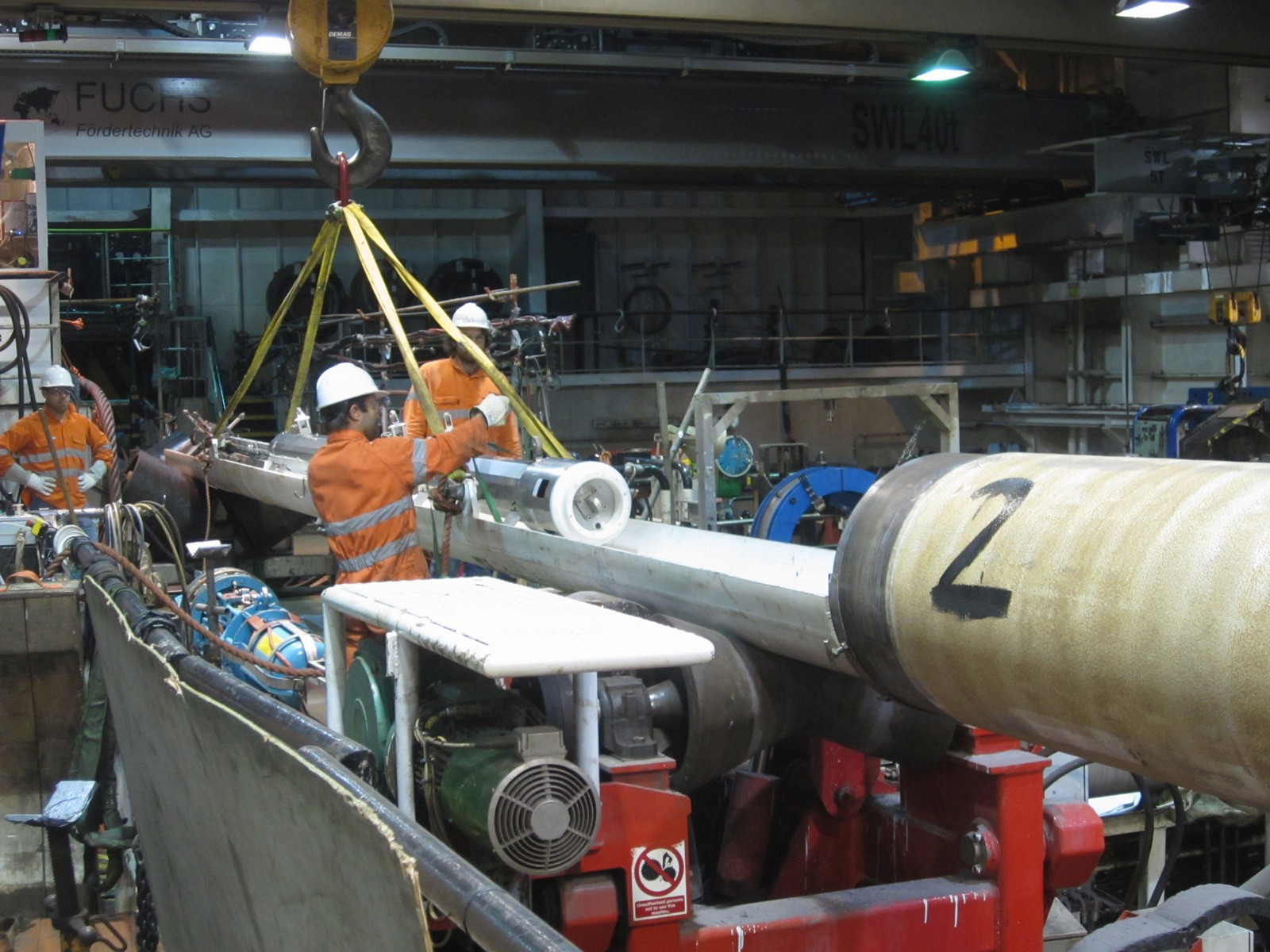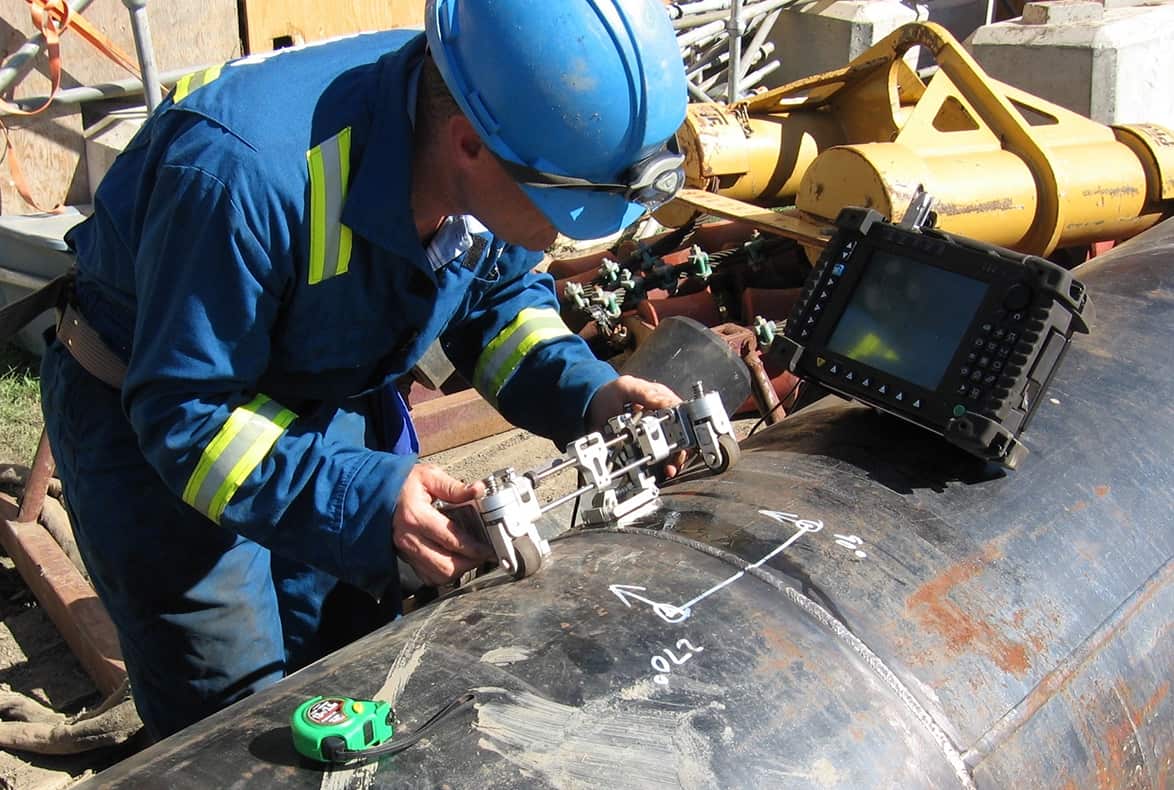Comprehensive Overview to Pipeline Welding Assessment: Ensuring Integrity and Safety in Pipe Construction and Maintenance
The stability and safety of pipes are vital in today's framework landscape, highlighting the crucial role of welding inspection in pipe building and maintenance. Pipeline Welding Inspection. The complexities included in welding inspection raising important inquiries concerning market criteria and the advancing modern technologies that may redefine these methods.

Relevance of Welding Evaluation
Welding examination plays an important function in making sure the integrity and safety and security of pipeline systems. It offers as a basic procedure that validates the high quality and reliability of bonded joints, which are usually one of the most weak spots in pipe building. Through systematic analysis, examiners can determine possible issues such as splits, porosity, and insufficient fusion, which might compromise the architectural stability of the pipe.
The relevance of welding examination extends past mere conformity with market requirements; it additionally safeguards public wellness and the atmosphere. If failures take place, pipelines bring unsafe materials present considerable threats. Reliable inspection procedures assist protect against leaks and tears, alleviating ecological damages and safeguarding neighborhoods. Additionally, comprehensive assessments can improve the longevity of pipeline systems, decreasing the need for expensive fixings and downtime.
Along with making certain safety and conformity, welding examination fosters a culture of high quality assurance within companies. By prioritizing assessment throughout the welding process, firms can develop an online reputation for dependability and excellence, eventually bring about enhanced customer self-confidence and business possibilities (Pipeline Welding Inspection). Hence, the value of welding evaluation can not be overstated in the context of pipe construction and upkeep
Trick Welding Procedures
Numerous welding procedures are employed in pipe building and construction, each with its very own advantages and applications. Among the most commonly made use of methods are Protected Steel Arc Welding (SMAW), Gas Tungsten Arc Welding (GTAW), and Gas Metal Arc Welding (GMAW) SMAW is preferred for its versatility and capability to carry out well in different ecological problems, making it ideal for field applications.
GTAW, often described as Tungsten Inert Gas (TIG) welding, is identified for its capacity to create high-grade welds with exceptional control over heat input, making it suitable for thin-walled pipelines and stainless steel products. GMAW, or Steel Inert Gas (MIG) welding, uses high deposition rates and is efficient for large-scale projects, commonly utilized in the construction of pipelines in controlled atmospheres.
Furthermore, Immersed Arc Welding (SAW) is utilized for its deep penetration and high efficiency, particularly in the building of large-diameter pipes. Each of these procedures adds to the total integrity and security of pipe buildings, enabling welders to pick one of the most appropriate method based upon product type, project requirements, and environmental problems. Understanding these essential welding processes is necessary for reliable pipeline welding inspection.
Common Flaws and Their Influence

Porosity, identified by tiny gas pockets trapped within the weld, weakens the product and can lead to leaks. Fractures, which might happen because of thermal stress and anxieties or improper cooling, can result and circulate in structural failure under pressure. Damaging, where the base steel is deteriorated along the weld grain, minimizes the reliable cross-section of the pipe, boosting the risk of crack.
Insufficient combination occurs when the weld steel does not effectively bond with the base steel, leading to weak locations that may fall the original source short under stress and anxiety. Slag incorporation, the entrapment of non-metallic material within the weld, can additionally damage the joint's integrity. Recognizing and attending to these defects early in the construction procedure is essential to ensuring the like this long-lasting integrity and safety and security of pipe systems, consequently guarding both the setting and the infrastructure.
Examination Devices and methods

Visual inspection is the initial line of defense, enabling assessors to recognize surface abnormalities, imbalance, or various other noticeable issues. Ultrasonic screening uses high-frequency audio waves to detect interior problems, giving precise depth dimensions and defining issues without damaging the weld. Radiographic screening utilizes X-rays or gamma rays to produce pictures of the weld, allowing the recognition of inner spaces, splits, or inclusions.
Magnetic bit screening is especially effective for spotting surface area and near-surface suspensions in ferromagnetic products. This technique involves using a magnetic field and fine iron bits to the weld, exposing problems with the accumulation of bits at flaw sites.
Along with these methods, specialized tools such as automated ultrasonic testing tools and digital radiography systems boost examination accuracy and performance, ensuring an extensive assessment of pipeline welds throughout building and maintenance.
Finest Practices for Compliance
Abiding by best practices for compliance in pipeline welding assessment is vital for ensuring the honesty and safety of the framework. Organizations has to establish a thorough high quality administration system that aligns with industry standards such as ASME, API, and AWS. This includes establishing thorough welding treatments that specify the strategies, certifications, and products required for welders.
Normal training and certification of evaluation workers are important to keep high competency levels. Examiners must be acquainted with different non-destructive screening (NDT) techniques, consisting of ultrasonic testing, radiographic screening, and aesthetic assessment, to efficiently determine possible issues.
Documentation plays an important role in conformity; keeping precise records of inspections, weld treatments, and personnel certifications assists to make certain traceability and liability. Set up audits and testimonials of welding techniques need to be performed to recognize locations for improvement and make certain adherence to developed protocols.
Final Thought
In conclusion, the application here are the findings of strenuous welding evaluation protocols is paramount for ensuring the honesty and safety and security of pipe construction and upkeep. Constant enhancement in inspection processes will contribute to the longevity and integrity of pipeline systems, emphasizing the critical duty of welding examination in the industry.
The stability and safety and security of pipes are critical in today's infrastructure landscape, emphasizing the critical duty of welding examination in pipe building and construction and maintenance. Comprehending these essential welding procedures is crucial for reliable pipeline welding evaluation.
Sticking to finest methods for conformity in pipe welding inspection is essential for guaranteeing the honesty and security of the framework.In verdict, the execution of extensive welding evaluation methods is extremely important for making sure the honesty and security of pipeline building and construction and upkeep. Constant improvement in assessment processes will certainly contribute to the durability and integrity of pipe systems, highlighting the important duty of welding assessment in the sector.